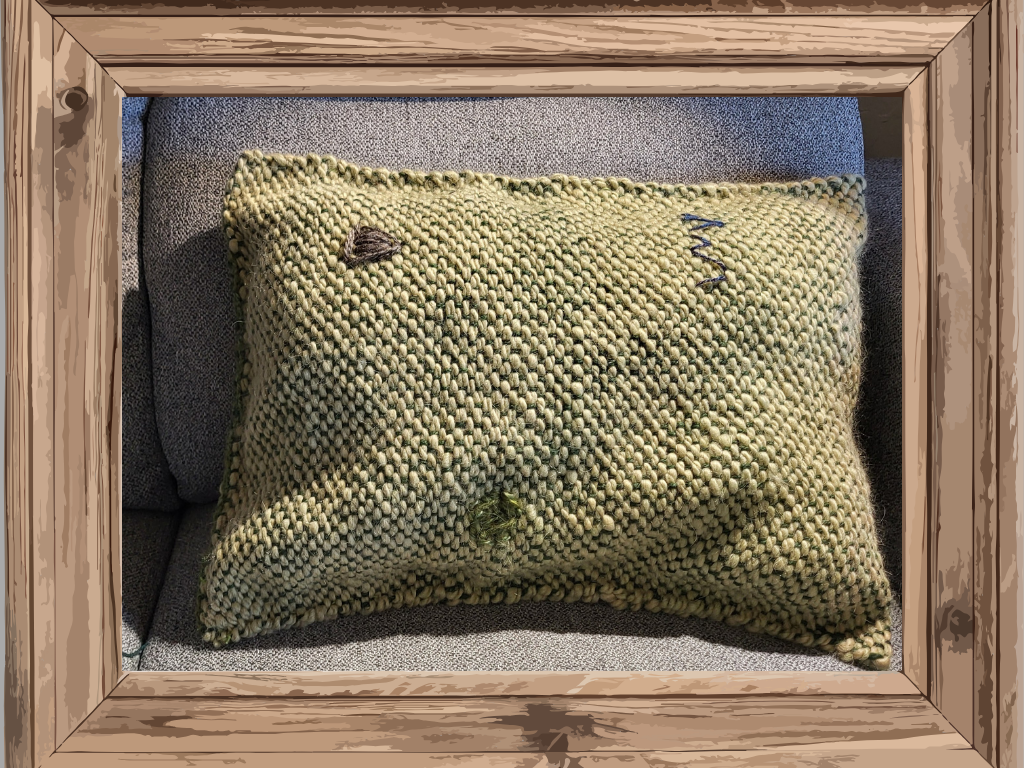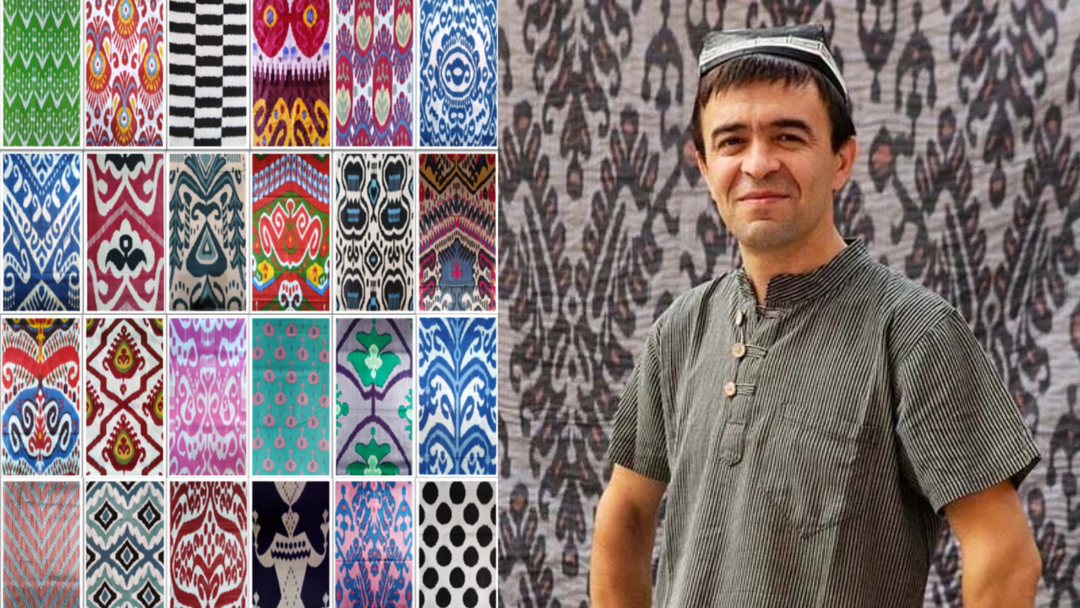One of the key takeaways from my 8+ years of working with artisans in Central Asia is that we’re all connected in one global eco-system that includes people, the planet and business. I was reminded of this when I going through my travel backpack the other day and found this little bundle. That little piece in the upper right is a cotton seed that I pulled out of the larger cotton boll.

Raw cotton I picked myself in Uzbekistan
As we drove from Bukhara to Samarkand in Uzbekistan last September, we spotted a cotton field right next to the highway. Due to overwhelming demand from the tour group, we stopped and hopped off the bus to try our hand at picking cotton.
Most of us were “city kids” who had never seen cotton growing in a field, much less picked it ourselves. A couple of the weavers in the group wanted enough to take home and try their hand at spinning.

Picking cotton along the highway between Bukhara & Samarkand.
The cotton field spurred our Uzbek tour guide to tell us stories of his youth, when school let out and everyone was sent to the fields to pick cotton as part of their civic duty during Soviet times. He remembered some of those excursions fondly as times when students and families were all together and felt part of something larger than themselves. The chance to get out of school for a few days was also a big part of the “fun.”
Cotton became a major agricultural product of Uzbekistan and Tajikistan during Soviet times, and still represents a significant portion of agricultural production in both countries. Cotton was so important to the economy that it was celebrated in much of the art during Soviet times.
There’s an entire metro station in Tashkent, Uzbekistan dedicated to “cotton growers.”

Pakhtakor ("Cotton Grower") Metro Station (above and below).

Mosaics and plaster carvings depicting cotton decorate the famous Arzob Cultural Palace in Khujand, Tajikistan, the former headquarters of a Soviet collective farm, built in the 1950s and modeled on the winter gardens of Peterhof in St. Petersburg, Russia. The Arzob Palace was the site where Tajik Independence from the Soviet Union was declared in 1991 and later where peace talks were held to bring an end to the Tajik civil war which followed independence.

Mosaics at the Arzob Palace.

Plaster carving at the Arzob Palace.
One of the Soviet ceramics factories in Uzbekistan also produced a classic blue and white porcelain pattern during the 1950’s-70’s based on cotton.

I also recall seeing embroidered suzani tapestries in Uzbekistan and Tajikistan created during the Soviet era that prominently featured cotton. I must not have thought they were very interesting because I couldn’t find a single photo to share of one of these suzanis.
Today, cotton is still a major agricultural product of Uzbekistan and Tajikistan. It also continues to be a major material used by modern textile artists.
The ikat weavers of Uzbekistan weave both 100% ikat fabrics as well as “adras,” which is 50% cotton, 50% silk. Cotton ikat weaving is also being revived in Tajikistan. We feature both 100% cotton ikats and silk/cotton blends in our HoonArts products.
Most modern suzani embroidery is cotton embroidery on a cotton base, in both Uzbekistan and Tajikistan. Our suzani master Munira Akilova designs our products using a cotton fabric base produced in Tajikistan and cotton embroidery thread. The thread, however, is imported from Russian because there is no locally produced high quality, colorfast embroidery thread produced in Tajikistan.
Cotton production in Central Asia also has a dark side, like cotton production in the American South in the 18th & 19th Centuries. Those “all hands on deck” cotton-picking expeditions were not voluntary or paid. Instead, it was a forced labor system controlled from Moscow on a national level that included millions of children over the years.
The human rights and child labor abuses led to in a 13-year international cotton boycott initiated in 2009 by the US-based “Cotton Campaign,” a coalition of more than 300 business and organizations, including major American retailers such as Amazon, Gap, J.Crew, Target and Walmart. In spring 2022, the International Labor Union’s announcement that Uzbekistan had succeeded in eradicating systemic forced labor and system child labor during the 2021 cotton production cycle led to the end of the boycott. For more information about this issue, click here.
The amount of water used in producing cotton is still an environmental sustainability concern in Central Asia (and elsewhere around the world), and has contributed to the drying up of the Aral Sea and the salinization of the soil and water in the region. Increasing attention, however, is being paid to water usage, creating hope for the future.
So, what do the American Civil War and modern Uzbekistan have in common? An economy based on cotton and supported by forced labor.
Yet another example of how much we humans have in common and how history repeats itself. It’s another illustration of why we must increase our collaborative efforts to transform the entire global eco-system of people, planet and business.







Leave a comment